While dreaming of a nomadic lifestyle, it was obvious to me that there were a few things that I would need along the way. First, I like a little structure in my life. I generally like to know where I’m going and I prefer to have a general plan for the next few weeks.
I also knew that I didn’t want to be a surface traveler, staying only in a touristy hotel to do the top 5 “must-see” activities before jumping to the next spot. I want to try to travel more slowly, more deeply. I want to get to know a community better by hanging around, asking questions, and possibly volunteering some of my time. My hope is that by traveling in this manner, I can make connections and some friendships along the way.
Nowadays, there are oodles of opportunities to travel with a purpose by volunteering or doing a work exchange. In a few minutes on the internet, you will find that many, many organizations would like to take your money and give you a first rate volunteer experience. While I may make a donation to a good cause, I don’t want to pay to volunteer. Searching for free opportunities takes a little more time.
One such source for free opportunities is a website called Workaway. (workaway.info) This platform is where volunteers who want to work for a couple of weeks- or a couple of months- meet “hosts” who are willing to take on workers in exchange for a bed and maybe some meals. Farms, hostals, after-school programs in arts or sports, and teaching English to kids are really common Workaway experiences offered all around the world. As a traveler, I decide where I’d like to stay for awhile and I search on the website for a potential opportunity to volunteer in that community. I read the reviews from former volunteer workers to get a better idea of what work I’d be expected to do and to understand exactly what I get in return. Then, I contact the host. They can read about me on my profile and read reviews of me from other hosts. If they agree to take me on, we confirm details and dates. It’s a great way to connect with some locals, feel like you’re doing some good, and enjoy a region in your off hours while practically living for free.
So, for my travels around Colombia, I decided I wanted to focus my first month in the mountains around Bucaramanga (mostly because I like to say the name Bu-Ka-Ra-Manga), and I thought it would be fun to find a work opportunity outdoors. After some searching on the Internet, I found La Montaña Mágica- El Poleo, and the wonderful people of Zapatoca, Colombia.
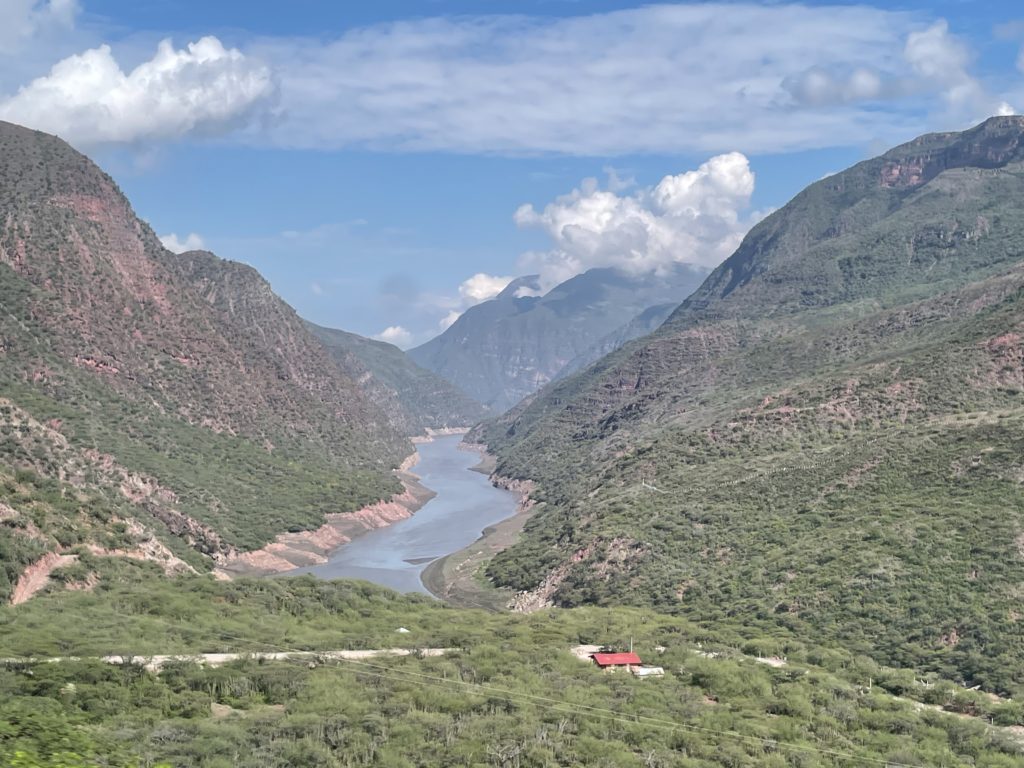

Twelve years ago, the Díaz Rueda family bought this 200+ acre (86 hectares) finca, or ranch, which was primarily producing cattle and coffee, and converted it into a Civil Society Natural Reserve to conserve and protect the forests of this special ecosystem. They named it La Montaña Mágica-El Poleo. Don Rey, an environmental visionary, and his son Daniel, a forestry engineer and plant aficionado, understood that these mountains and tropical valleys lay at the intersection between two different ecosystems, the high altitude humid-tropical zone and the dry lowlands in the rain shadow of the Eastern Andes mountain range. Therefore this land is a rich habitat for species from both of these zones. Today, thanks to Daniel and his scientific contacts, they have inventoried more than 135 species of birds, 20 species of reptiles and 30 different mammals including the endangered Oso Andino (Spectacled Bear) that only lives along the high mountains of the Andes. Their monitoring cameras have also documented large felines who use the property as a home.
As if that isn’t enough, the 900 different species of plants in this mountain valley also attract a lot of attention, the most famous being las palmas de cera, or wax palms. If you enlarge the photo below, you will see the white sticklike palm trees climbing up the ridge from the center to the upper-right hand corner of the photo. These palm trees are the tallest palm trees in the world, and they are the Colombian National Tree. As tradition has it, these palms are adored for their beauty during Palm Sunday services so each year all over Colombia and Latin America, the new leaves are cut from these slow-growing trees. Ofcourse, Don Rey, Daniel and their family, already misunderstood in the community for taking perfectly good cattle land out of production, have had to work hard to educate the community on why these particular palms, and the native forests, are important to save. They do this through a lot of outreach, education and cooperation from the community.

The main houses which serve as the scientific research /education centers are located down in the valley
about 30 minutes from the road.


you can see their hillside of pines, which is the sustainably managed part
of this otherwise wild reserve.




for the network of reserves.
During my 16 days on the Reserve, I helped clear this large garden, pick coffee cherries, sort the coffee beans by quality, and help prepare and serve meals from this old-fashioned kitchen.


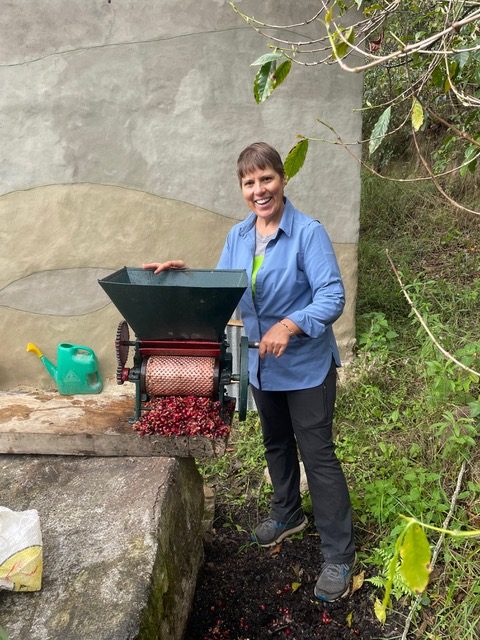



His humor and great food made every day more fun.
On a local level, Don Rey invites school groups to the reserve for an environmental education field trip. But it’s Daniel, as the scientist, who generates national and international attention. I was here for several days before I really understood the breadth of his outreach. A group of students from a nearby university had come to tour the reserve, and Daniel invited me to listen in on his presentations to them. I learned so much about his efforts.

First, Don Rey and Daniel have been instrumental in inspiring other local landowners to convert their land into conservation reserves. Then, in collaboration with ten other nearby reserves, they have formed a network called RENAZ. Their mission is to conserve the land, restore the native forests, sustainably produce forest products to help local communities, and promote ongoing scientific research of the biodiversity as well as monitoring the effects of climate change over time. Scientists from around the world are paying attention to their efforts (World Wildlife Fund was visiting the week after I left), and the research being conducted is being published and presented at international conferences. I was really inspired by their work, their long term vision and all they are doing to be better caretakers of the natural world. During a recent interview for World Wildlife Fund’s magazine, Daniel eloquently put their philosophy into words: “The true owners of this mountain are the spectacled bears, the plants, the birds, the mushrooms, the insects and the other species that are found here. We only have a title and we are the legal administrators of these lands, but we are convinced that our mission is to return the land to the Earth.”

with the nearby National Parks (shown in green).


Don Rey, who is really the spiritual caretaker of the land, adds the theatrical flare to the field trips by hosting official graduation ceremonies for visitors of the reserve.

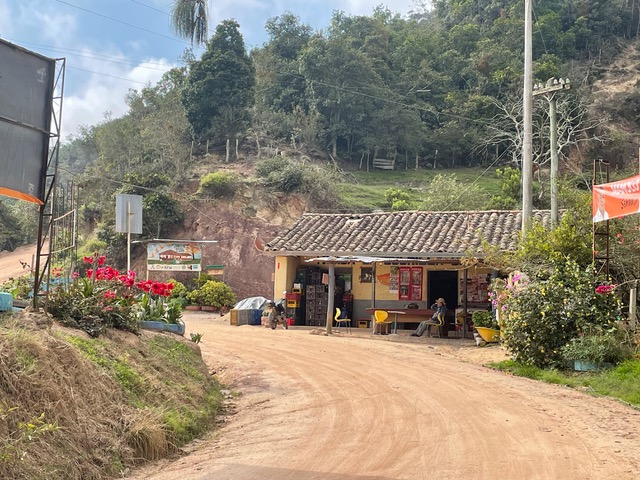
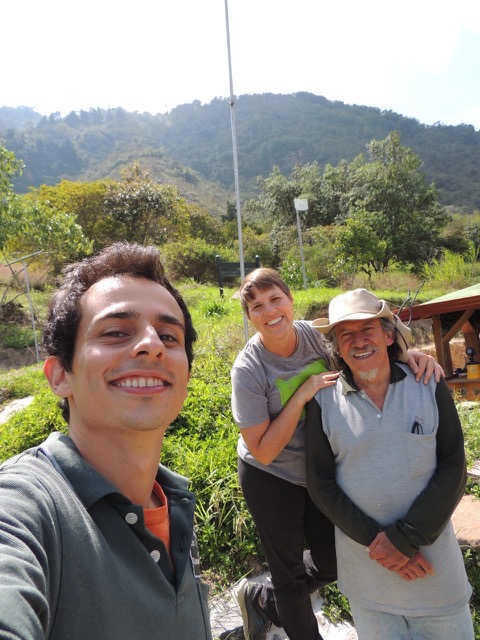

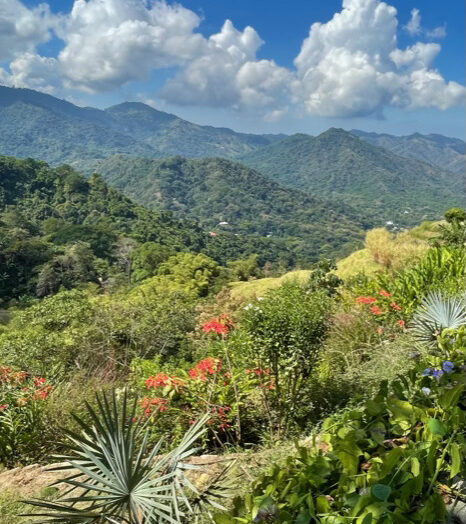
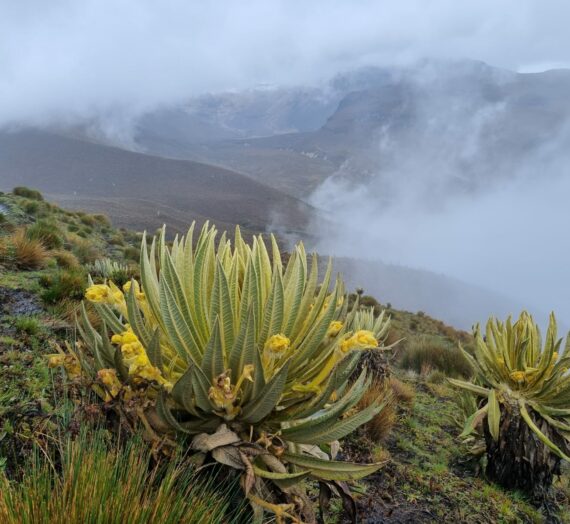
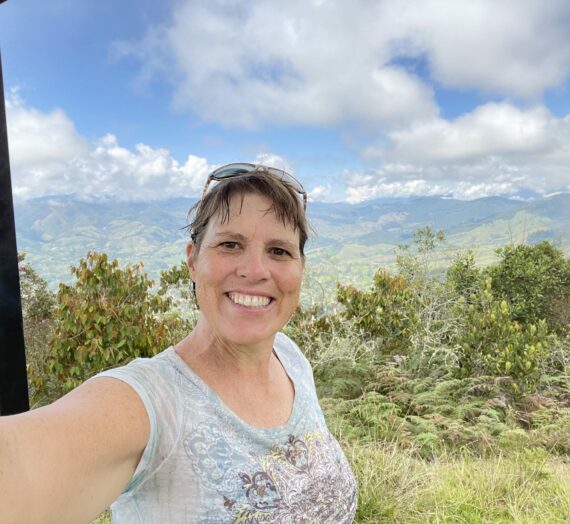
Racheli
Looks amazing and super interesting!!!
Anne T. Wilson
Hola!, beneficiada! So happy you are exploring and sharing! Looking good, feelin good, traveling well! Keep on! Portland is deluged with rain and thatis better than smoke. Got my MA in teaching and finishing up EDTPA rn. Stay safe and open!
Gayle Warberg
I love seeing South America through your eyes, words and pictures! Safe travels my friend!❤️
Stephanie
Now you are in your element! Thanks for sharing this fascinating experience! Steph
Chris
What a great opportunity! I have students who lived in South America – amazing to expand my knowledge through your adventures!